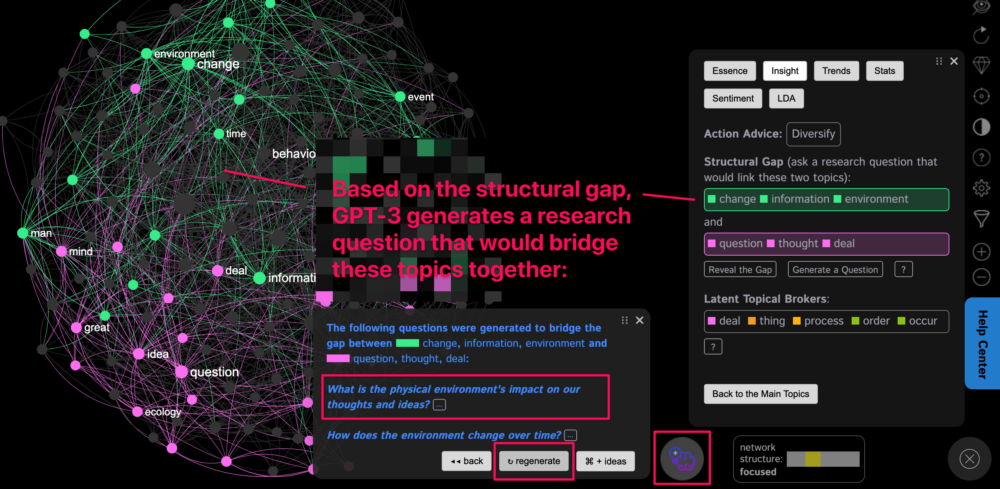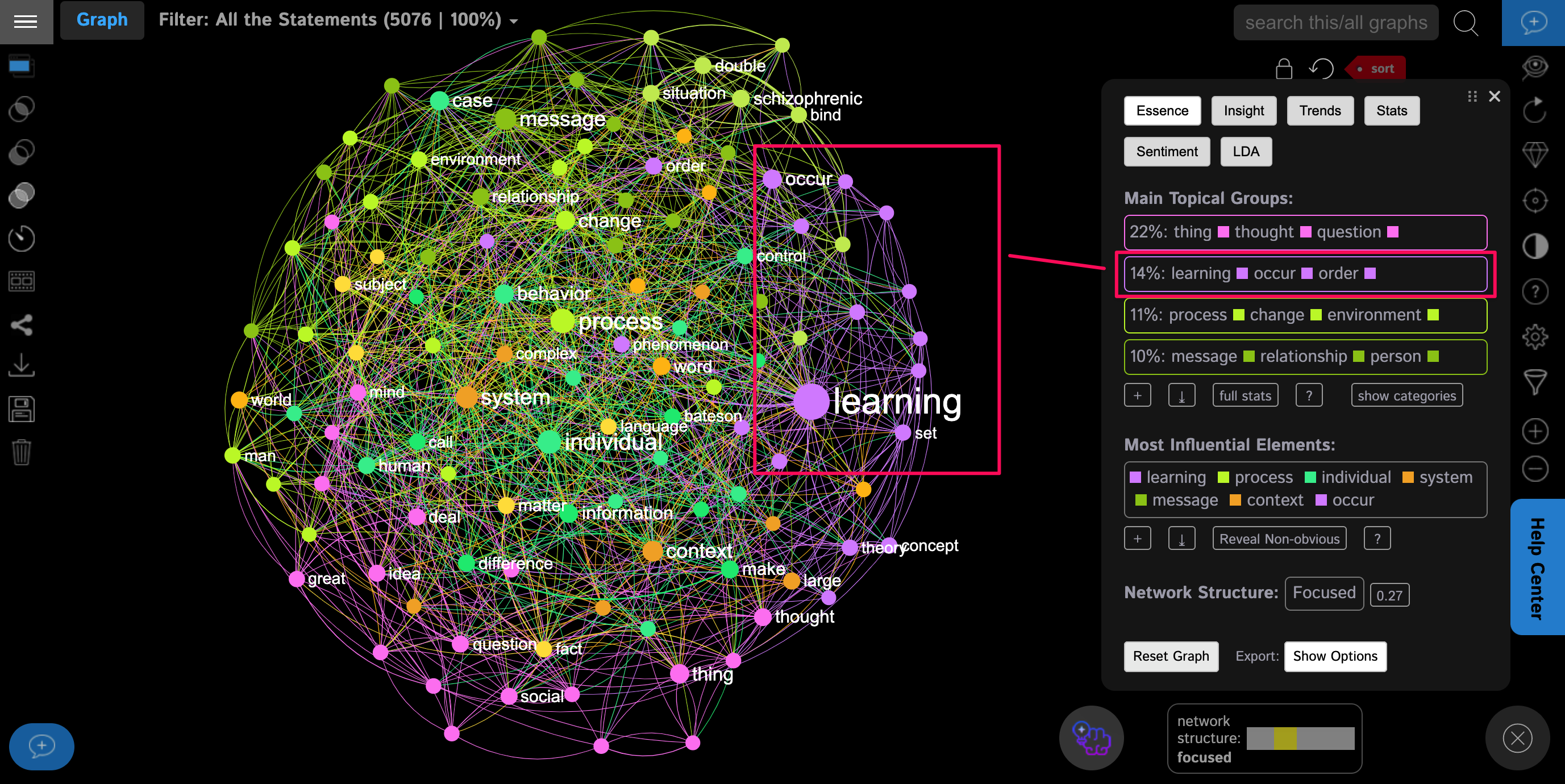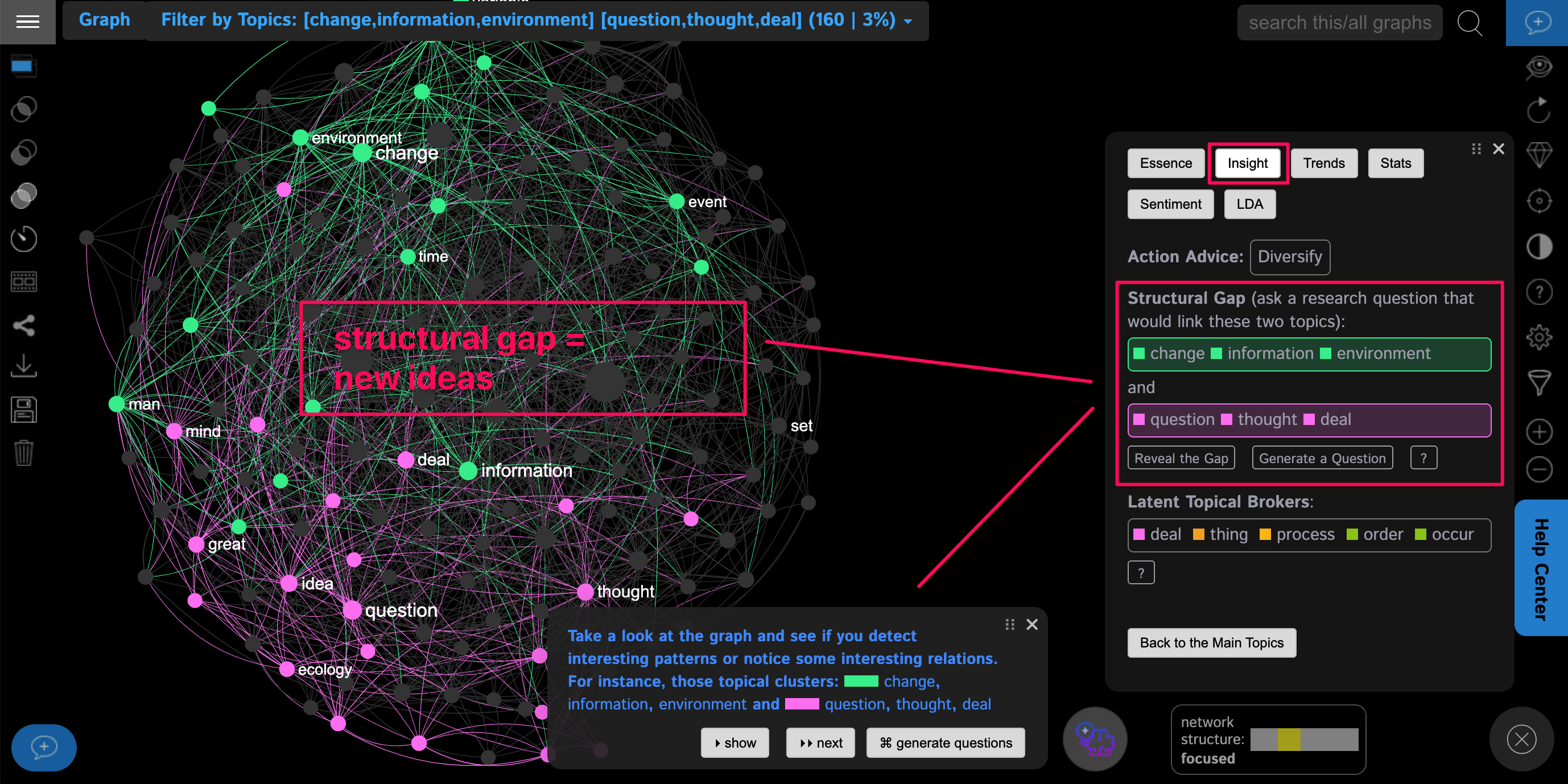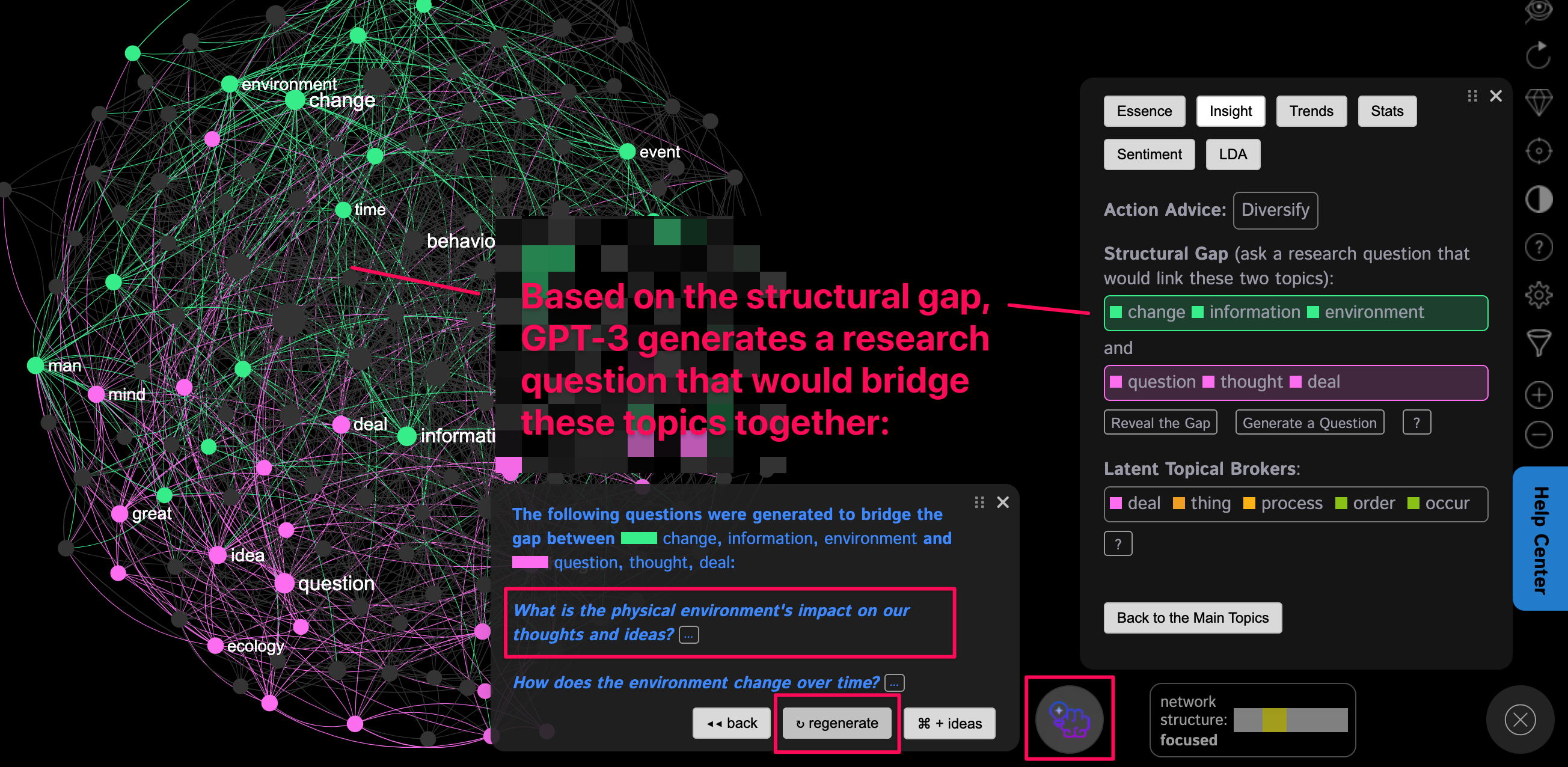Posted by Nodus Labs | April 10, 2022
AI Writing Tool: GPT-3 Text Generator of Research Questions

Most AI content generator tools today are too focused on generating answers. Writing tools, such as Jarvis, Copy.AI, Rytr, and Zyro promise the “perfect ad copy”, the “best sales pitch”. The human-AI interaction, in this case, is based on AI replacing a certain function and this often leads both to the poor, simplistic results and to criticism of the effects it has on the human mind.
Based on Open AI GPT-3 and our text network analysis tool InfraNodus we created a special approach that can be used to generate interesting research questions in relation to any content. It uses the network representation of text to better understand its structure and to find the structural gap between different ideas in a discourse. It will then generate a prompt for Open AI’s GPT-3 NLP model to generate a research question that would bridge those ideas and, thus, come up with a research question that proposes something completely new and, yet, is still relevant to the original discourse.
Such an algorithm does not provide an answer, but, rather, questions the user, stimulating the mind, rather than replacing a part of it. Its intent is not to simplify the creative process of writing, but to rather challenge it in an interesting way, fostering creativity and stimulating imagination.
Network Representation of Gaps Between Ideas
In order to demonstrate how the system works, we will use an example of Gregory Bateson’s book “Steps to an Ecology of Mind”. Users, however, can also add their own texts, personal notes, or some other data, and upload a book or a research paper.

Network analysis algorithms will be applied to get insight into the structure of this discourse. The nodes (words) that have a higher influence are shown bigger as the hubs on the graph and are spread apart. The smaller nodes that tend to co-occur in the same context are clustered next to each other around those hubs and have the same color. This helps us identify topical clusters or communities of nodes that form the main topics and discover the relations between them. Such an approach provides a relational overview of any discourse or text, offering a concise visual summary of the main ideas and of the context.
The next step is to identify the structural gap in the graph: what are the two distinct topics that could be connected better? InfraNodus has a built-in graph analysis algorithm that identifies those topics based on the graph’s structure:

This structural gap is identified between the two topics, each of which has several concepts. Bridging those together would generate an interesting research question that would help link those two clusters better.
Generate a Research Question Using OpenAI’s GPT-3 Text Generator
In order to generate a research question, InfraNodus will send the top words from each of the distinct topical clusters that should be linked to the Open AI’s GPT-3 system as a prompt. As the words in each of those clusters are already related, the research question will be highly relevant as it is formed from the words that are semantically close to each other. The question itself will be formulated in such a way as to bring in the ideas that would link these two topics together:

For instance, in our case, GPT-3 generates this question: “What is the physical environment’s impact on our thoughts and ideas?”
We can save this question and click “Regenerate” to have GPT-3 generate more questions based on the original text. These questions can be saved in the “Interpret” panel of InfraNodus to create an overlay graph on top of the original one that will show how much those questions cover the original discourse.
After a few iterations, we will create a list of questions, which can then be used to expand on this text and to develop this discourse further:
How does individual behavior change in response to environmental change?
How does the unconscious influence the way in which a person interacts with the environment? How does the environment influence a person’s process of change?
How do the personal networks of individuals affect the rate at which behavioral changes are adopted?
This approach is in stark contrast to the method used by most AI writing assistants like Jarvis or Rytr today. These tools will usually demand a short “seed” phrase and keywords to contextualize an idea and to generate a template-based text (a blog post title or an ad copy, for instance). As they are trained on generic material, their output is also highly generic. The results may be useful, but they will not make the user think in a different way or open up new perspectives.
In contrast, our approach is based on keeping the human in the loop. The AI writing assistant is not a piece of software to outsource the work to, but, rather, a companion that makes your work more interesting and challenging. It poses questions instead of answers. It also reveals its own logic behind the scenes, showing the graph and leading the user through every step of the way, so they know where the ideas are coming from and how they are structurally embedded into the discourse.
—
If you would like to try the approach above, please, check out InfraNodus AI-powered text network analysis and visualization tool. Also, read our new article on improving ChatGPT playground outputs.

